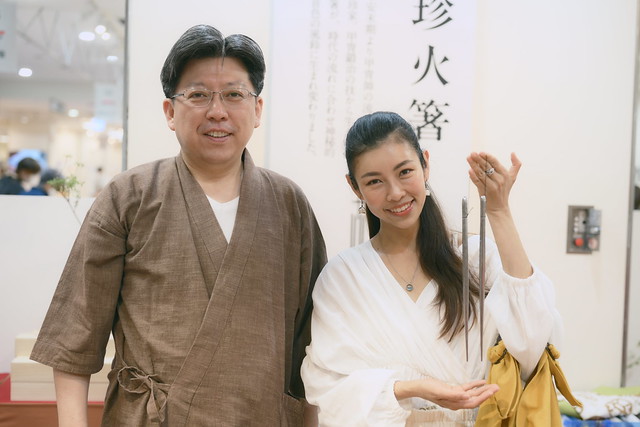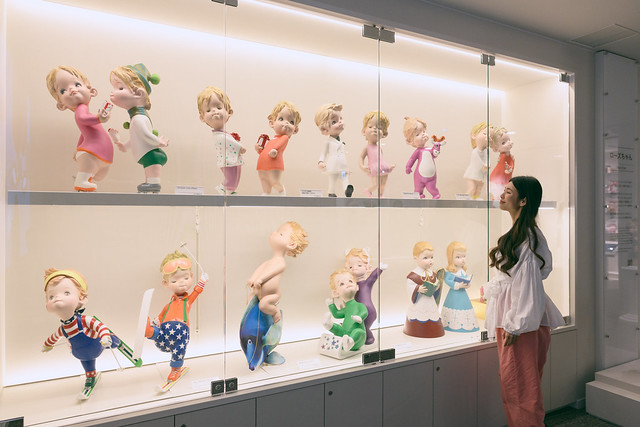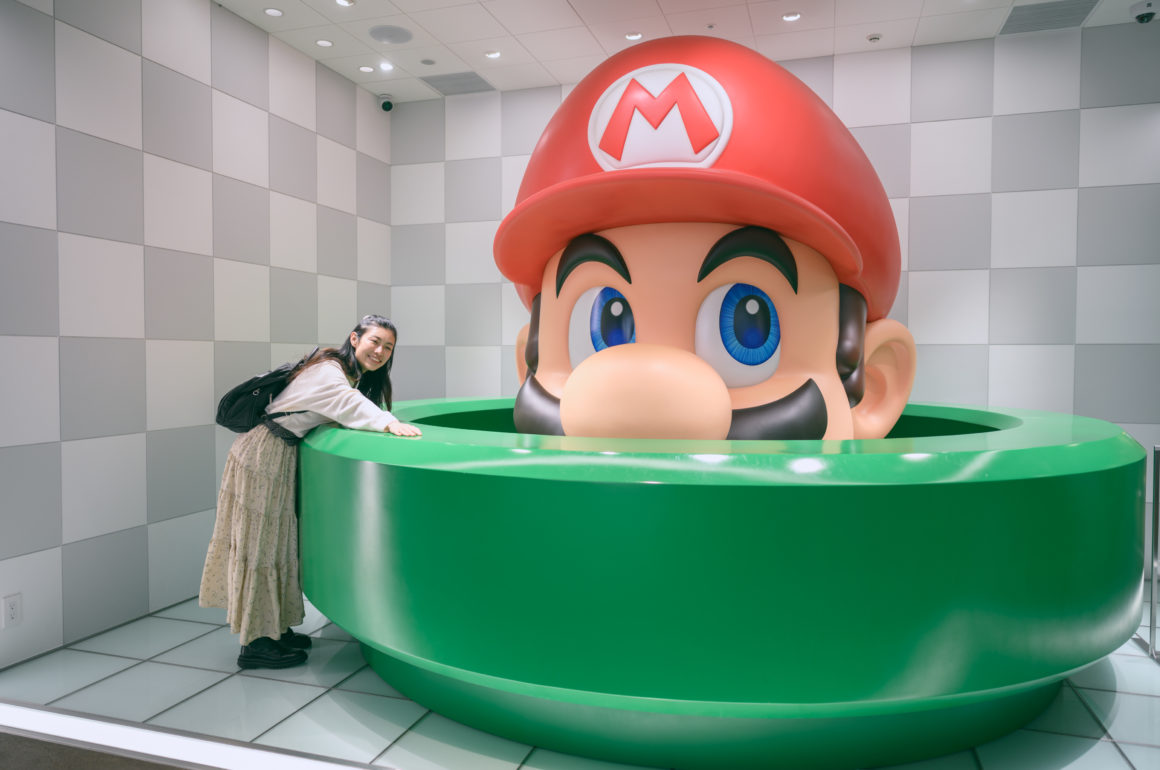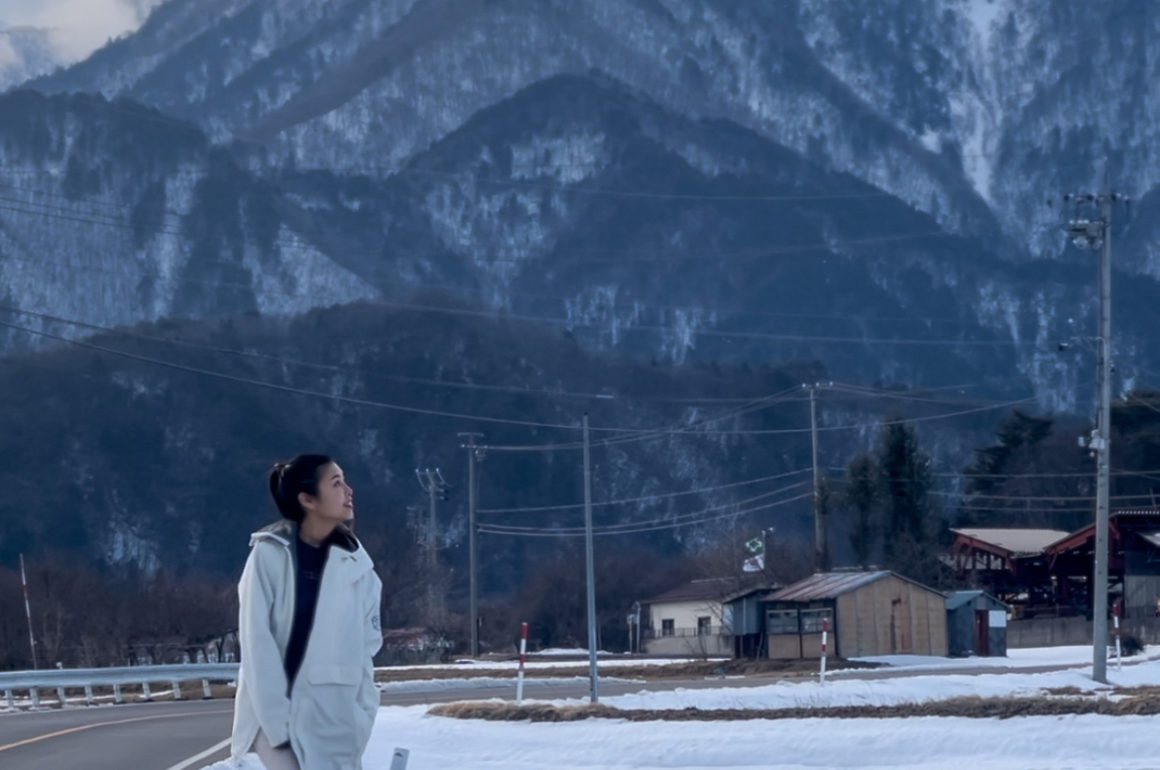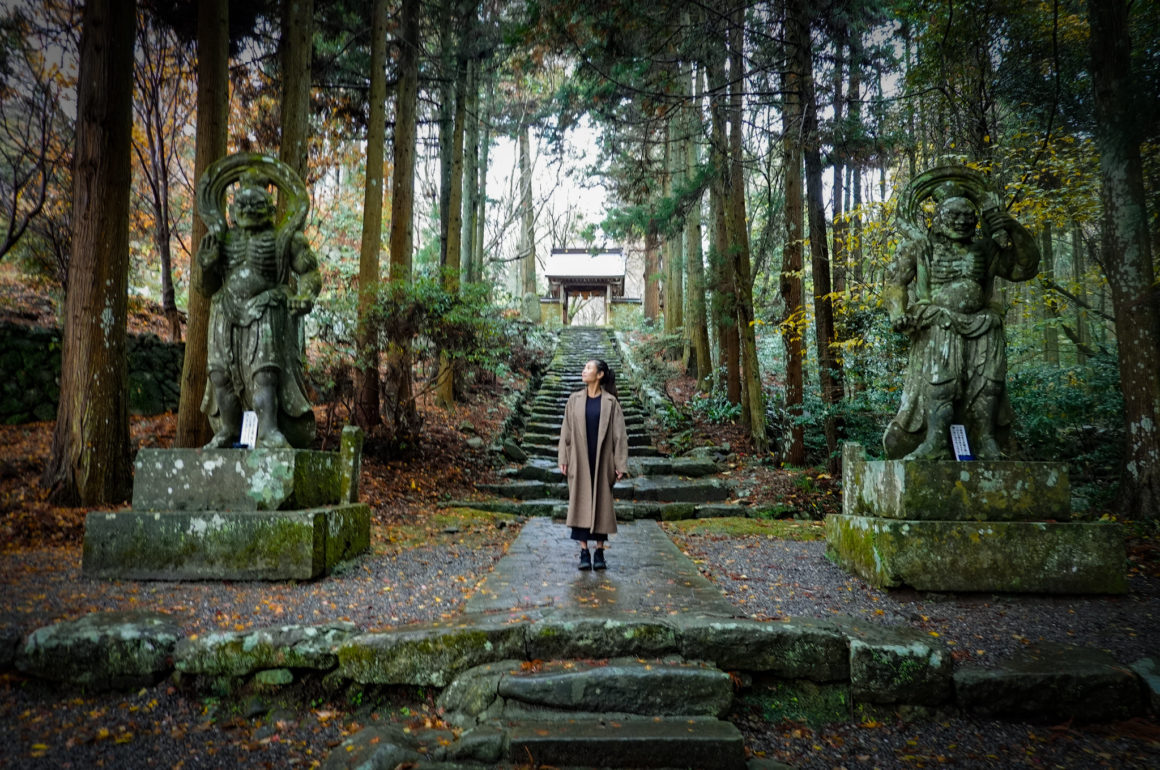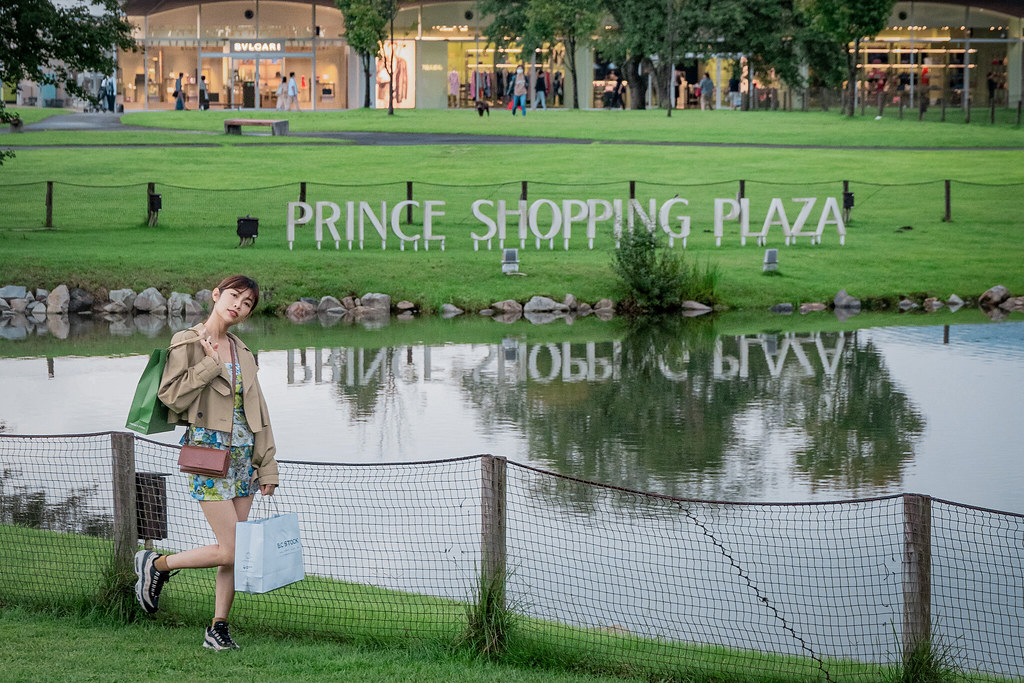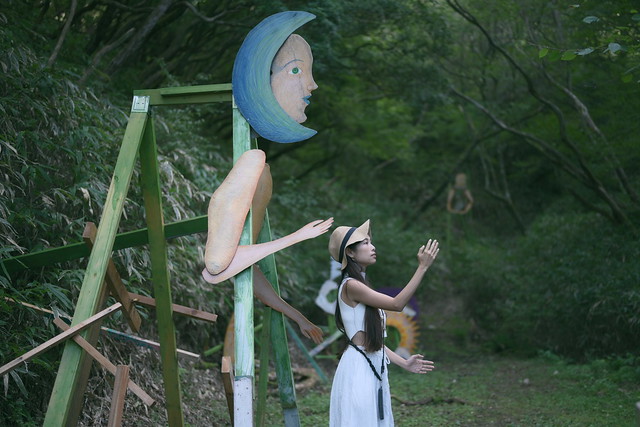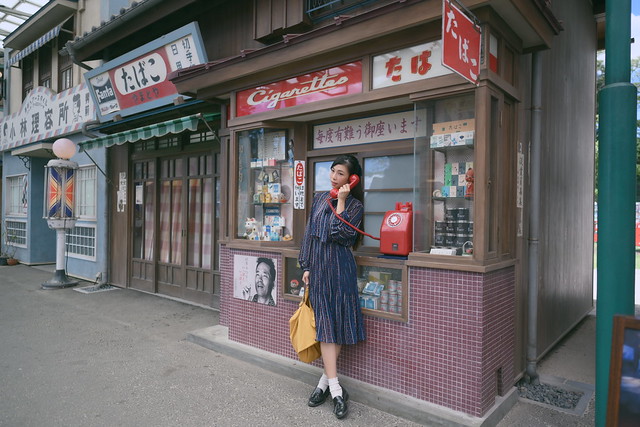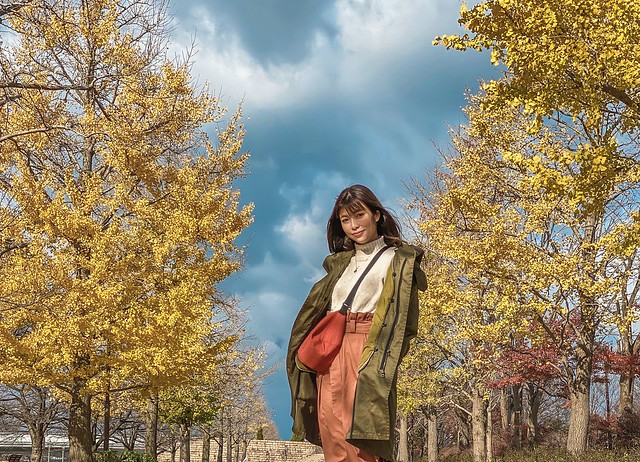
Have you been to Niigata before?
Did you know that Niigata was once the most populated prefecture in the whole of Japan, dating some 120 years back? That’s actually not that long ago. It was one of the top 5 trading ports of Japan, along with Hakodate (Hokkaido), Yokohama (Kanagawa), Kobe (Hyogo) and Nagasaki.
It is also blessed with almost everything – sea, pure water, onsen, fertile soil, gold mines, lots of snow, allowing the people of Niigata to make the best out of what nature offers – rice, sake, and great seafood.
So here’s a combined chronicle of my recent two trips to this once wealthily flourished port prefecture along the coast of sea of Japan. And Niigata is more than just snow and ski. 🙂
Before I go on, note that this article only covers areas of Niigata city, Tsubame Sanjo and the vicinity. There are still a huge part of Niigata I have yet to cover including Nagaoka, Joetsu and Myoko, Uonuma and Yuzawa, and northern Shibata and Murakami.
Let’s start!
ECHIGO YUZAWA 越後湯沢
Echigo-Yuzawa is the nearest city of Niigata from Tokyo. You just need to hop on a Joetsu Shinkansen at Tokyo Station which brings you to Echigo-Yuzawa station in just 77 minutes.
1. Ponshukan – Echigo Yuzawa Station ぽんしゅ館

Other than its famous ski resorts at Yuzawa and Naeba and the therapeutic hot springs, know that just getting off the station alone is a mini trip worth exploring. The best thing about Echigo-Yuzawa Station other than its wide array of souvenirs and local restaurants , is Ponshukan, a Japanese sake theme park located in the same building – CoCoLo Yuzawa & Gangidori Tourist Life Plaza.

How is this not heaven for sake lovers? Sample over 100 kinds of Niigata-made sake, just make sure you don’t get too drunk early in the morning. You can buy 5 coins for JPY500, most sake requires only one coin but the more unique or premium ones require more than one coin.
A video of Ponshukan:
There are 3 branches in total, all located within the stations: Echigo-Yuzawa Station, Nagaoka Station and Niigata Station. Do note that at the Echigo-Yuzawa Station, there’s even a sake hot bath you can soak in!!!
Area: Echigo-Yuzawa
Website: https://www.ponshukan.com/
OJIYA CITY 小千谷市
2. Japanese Carp Village 錦鯉の里

Japanese carp fanatic – here’s your holy ground. At Nishikigoi No Sato, you can find some of the country’s most magnificent koi fish, lovingly known as the “living jewelry”, also the national fish of Japan.
The facility contains an information hall, a huuuuuge pond with all the splendid koi fish swimming and a Japanese garden on site (however the garden is closed between Dec and April due to heavy snow).
You can find explanations of the origin of Nishikigoi, and learn a thing or two about breeding skill if you are interested.
Watch a video of me feeding and petting the koi fish:
Area: Ojiya City
Website: http://www.nishikigoinosato.jp/eng/index.html
NIIGATA CITY 新潟市
3. Northern Culture Museum 北方文化博物館

Can you believe that this museum occupying an area of almost 30,000 square meter, is actually once a farmer’s house?
At Northern Culture Museum, you will get a glimpse into the lives of a family, Ito, which started out as farmers in the Edo period, who grew so rich that they eventually built an enormous fortune and became the greatest landowners in Echigo (then Niigata).
Well, there’s always hope for each and every one of us.

You will be greeted with a gigantic wisteria tree that will turn magnificently lilac in early summer.

This hall is called zashiki – a formal tatami reception room that looks out to the beautiful Japanese garden and used for important family occasions such as weddings, funerals and so on.

Take a look at this. This is the entire menu served during one of the family daughter’s wedding. That’s how ridiculously wealthy they were.

Sanrakutei – a tea house pavilion is triangle in shape, where special craftsmanship was needed for its original pillars, tatami, drawers and other fittings made in diamond or triangular shape.
Area: Kounan Ward, Niigata City
Website: http://hoppou-bunka.com/english/
4. Eat Aburi Nodoguro Don 炙りのどぐろ丼

Nodoguro is said to be the king of white fish, which sometimes appears as one of the rare “neta” of your okamase sushi course. But here at Sekai Sushi, you get to eat a whole bowl of it with an extra punch – having it seared fragrantly!

This is what the local occasionally indulge in as a bowl costs JPY2300, but really worth the hype!
Area: Central Niigata City
Website: http://www.sekaisushi.com/index.shtml
5. Oiran Experience 花魁体験
Think kimono being too mainstream? Here’s a kimono level-up – Oiran experience!

Take the chance to dress up as an oiran (female entertainer in the Edo period. Sort of like geisha but more… erotic!) and have a mini photoshoot session at Studio Clan, the only photo studio in Niigata which offers oiran experience.

Most of their gorgeous kimono and accessories are vintage and authentic. Do pick your favorite style – I have heard that this experience is popular even among male customers!
Area: Central Niigata City
Website: https://www.studio-clan.com/home-1
6. Minato Inari Shrine 湊稲荷神社
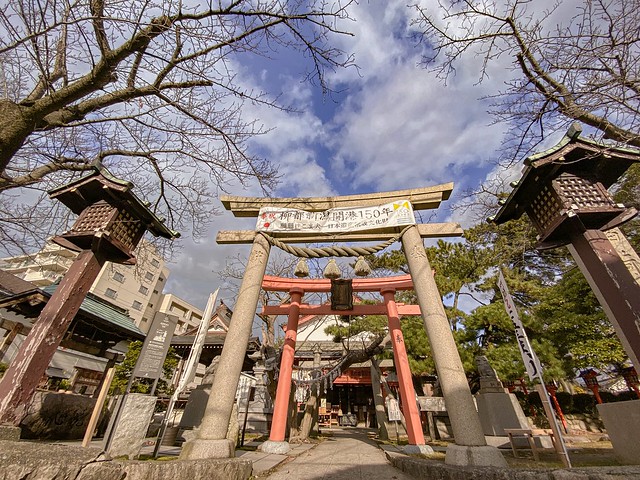
This is a sidetracked spot I discovered on my way to the oiran experience (so it’s pretty nearby!), and by no way is a major attraction but I found the rotating koma-inu (guardian dogs) super charming, being the only rotating dog statues in Japan!

So, women in the days gone past used to visit this shrine and will turn the dog clockwise and pray for bad weather. Huh… say what??? Yes, as Niigata is a harbour city, a stormy day would prevent the women’s seafaring husbands from sailing off. A little silly it sounds, but that’s likely how the shrine gained the reputation of being a power spot for relationship – where couples come here to pray for love.
Area: Central Niigata City
Website: https://komainu-minatoinari.com/
7. Doshinkasho Maruya Honten 童心菓匠 丸屋本店

Maruya Honten is one of the oldest confectioneries in Niigata, founded in 1878. The shop uses Niigata ingredients such as chestnuts and French pearssourced directly from farmers.
If you are a fan of wagashi, you must try the “Echigo Nashi-kan” – a Japanese traditional jelly made with pear. That was my favorite dessert in the shop.

During festive seasons, the sweets are wrapped beautifully for gifting. Can you imagine a Christmas dessert box to be this traditionally Japanese?

Seasonal wasanbon sweet box.
Area: Furumachi, Niigata City
Website: http://www.maruyahonten.com/
8. Bar Hopping Tour with Edge of Niigata

Wanna experience a slice of Niigata’s buzzing night life? Thinking of bar-hopping but not knowing my local friends? Fret not! Edge of Niigata is here to bring you all the fun!

If you absolutely can’t live without sake, why not take on a sake lecture fully conducted in English while taking the opportunity to sample different types of Niigata-made sake?

Or, if you just want the drinking part, Edge of Niigata has also just the right fun for you. The friendly English-speaking guide staff (by the way his name is Junya! I met two Junyas one just this Niigata trip alone and had lots of jokes about it haha) will take you to 3 different bars in Flower Street in Furumachi, Niigata City, and each hopping trip comes with a drink (not necessarily sake) and a small appetizer to go with the drink (actually some of the meals are not small at all!! I got so full by the end of the tour haha).

The experience is JPY4800 for 3 tickets and even though it’s a night activity which involve drinking – guess what? Your children are welcome too! Just make sure the don’t accidentally sip on your whisky!
Area: Furumachi, Niigata
Website: https://edge-of-niigata.com/
9. Dine at Tomi Sushi 富寿司

Singaporeans who are reading this, I’m sure you know the famous Tomi Sushi chain restaurants? Hey it is originally from Niigata! The stores in SG are the first they have outside of Japan.
While in the prefecture, do enjoy fresh, affordable sushi. You can find their stores all over Niigata.
Area: All over Niigata
Website: https://www.tomizushi.com/en/
10. Ponshukan (again!) – Niigata Station

If Yuzawa isn’t on your destination list, you can always visit the Ponshukan branch located inside Niigata Station itself.

They have just as many types of sake for you to get drunk on!
Area: Niigata Station
Website: https://www.ponshukan-niigata.com/
11. Fruits Picking at Shirane Grape Garden 白根グレープガーデン

Fruits picking has soon become one of my favorite must-do activities in Japan, mainly because it’s a really fun and educational experience especially for little kids, and also because of how value-for-money it is considering how expensive imported Japanese fruits are in Malaysia and Singapore.

Without a doubt, you can get the freshest, affordable all-you-can-eat seasonal fruits here at Shirone Grape Garden. It’s the first indoor grape garden I’ve seen so it makes a rainy day eventful and also? Grapes are not the only fruit they have despite the name.
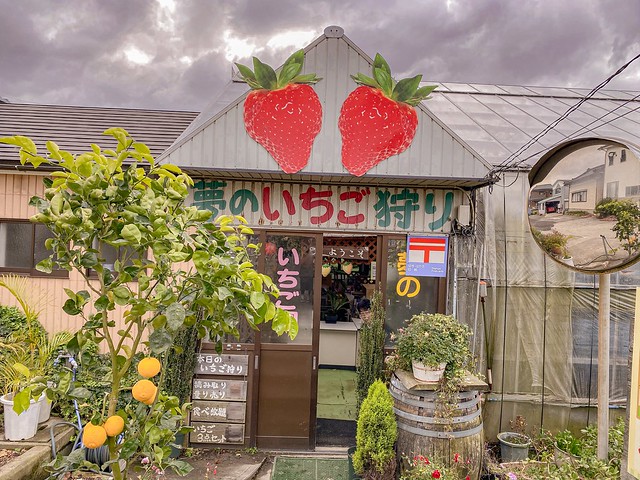
In winter to spring time, you can pick the famed Echigo Hime ichigo here.
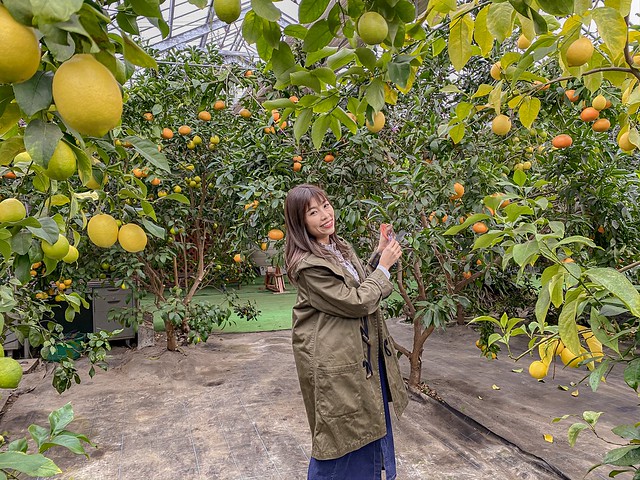
For me I went for mikan picking!

Stuff as many mikan as you can into the bag provided for only JPY500!!!

Wanna pick everything but your luggage is full? There’s also a all-you-can-eat fruits buffet for only JPY1200!

Lastly, while you are in Niigata, I strongly urge you to try Le Lectier (pronounced “Lu Rekucheh” in Japanese), a branded French Pear grown only limitedly in Niigata so you can hardly find it outside of the prefecture.

It is sooooo soft and fragrant I swear it was one of the best pears I’ve ever eaten!

That’s not all! If your stomach still has room for a cup of gelato, go for their handmade fruit flavors. But my top personal recommendation is the Koshihikari Rice flavor, with actual rice bits in it. Wh… what?? No. Don’t scream yet. Just try it and thank me later.

Bonus? A fluffy domestic animal yard at the back of the fruit farm.
Area: Minani-ku, Niigata City
Website: https://www.nvcb.or.jp/travelguide/en/contents/sightseeing/a7.html
12. Experience local life at Pier Bandai

Get a taste of local Niigata life here at Pier Bandai, an attraction that houses supermarkets, souvenir stores, meat and fish markets where the locals visit for the necessity of their daily lives.

A huge market selling all sorts of made-in-Niigata souvenirs and fresh produce.

Yukinoshita Ninjin – carrot drops… ?

There’s also a super popular standing sushi bar called Benkei, originally from Sado island (a separate blog post is coming up for this island of wonders).
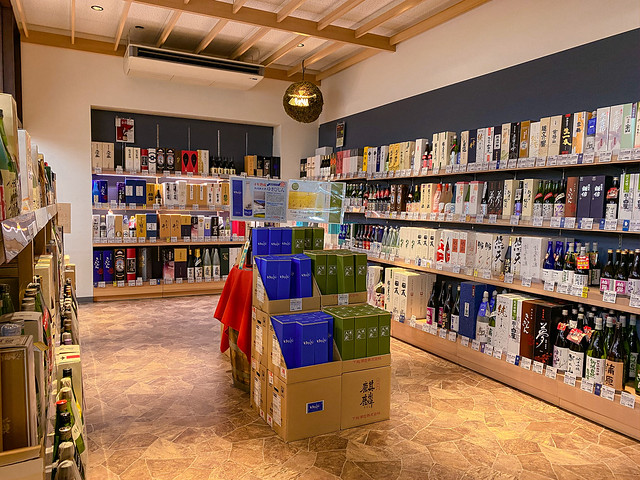
Find your favorite Niigata-produced sake here!

This is the map of major sake breweries in Niigata alone. Isn’t the number insane??

Check out a paper bag made from recycled rice packs which I thought turned out to be super unique, selling at only JPY300. When I carry it I simply look like a grocery-shopping-housewife but I totally can see a fashionista rocking it in the streets of Harajuku. Haha.

Lai liao lai liao. My daikon. Roots vegetables are said to be especially delicious in Niigata prefecture as the heavy snow allows the vegetables to naturally produce higher sugar content.
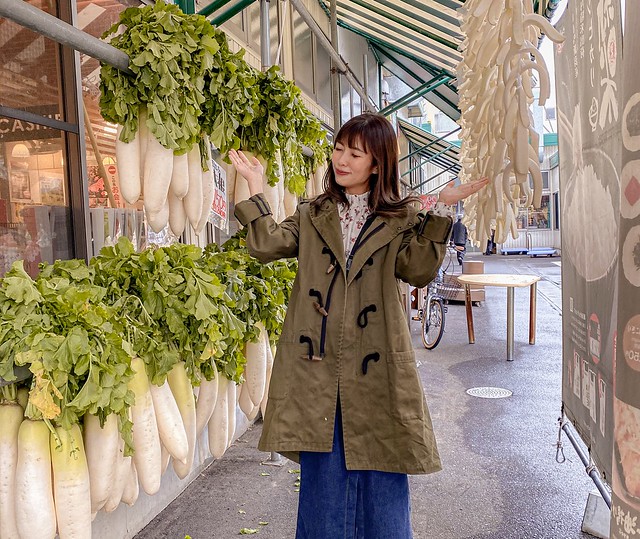
These daikons are actually purpusely hung out to be dried to make “hoshi daikon” – dried daikon.

Daikon is more versatile than we thought!
Area: Central Niigata City
Website: http://www.bandai-nigiwai.jp/en/shop.html
13. Shopping time at Niigata Furusato Mura 新潟ふるさと村
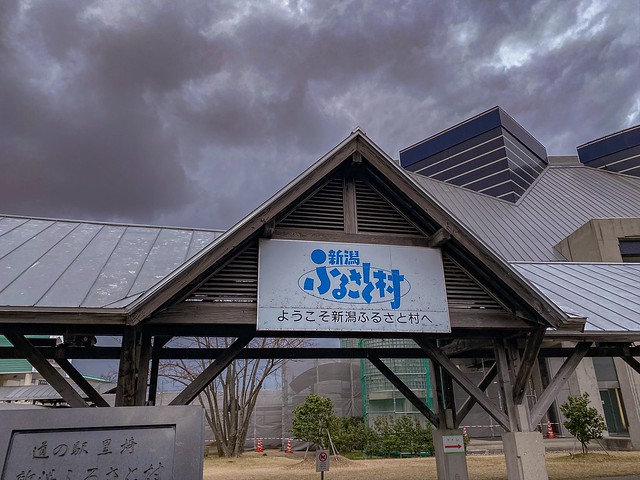
If the weather doesn’t favor you, know that there’s an indoor attraction in Niigata city where you can spend hours at, while learning about everything you need to know about this alluring Snow Country. When the sun is out, also know that now you have the bonus of enjoy its beautiful flower garden.
Best of all ? Entrance is free.

The massive facility is designed to let tourist enjoy a one-stop mini Niigata in one single building. You can learn about the history and culture of the prefecture and for foodies, there are everything you can sample that’s iconically Niigata. I guess it also makes a perfect last stop before you leave the prefecture as there are over 10,000 (!!!) assortments of souvenirs to shop till you drop.
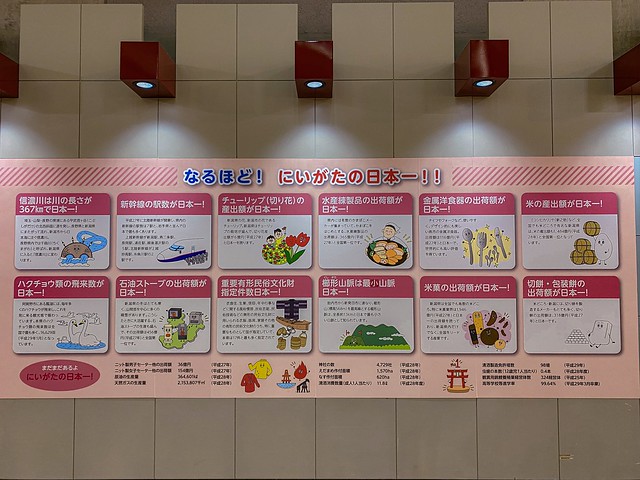
Niigata’s Number Ones. From the obvious such as No.1 rice and rice senbei production in Japan, most numbers of Shinkansen stations in Japan, to trivia such as having the most numbers of swans flying in to a prefecture in Japan lol.

There’s a Snow Country Experience Corner where you can enjoy snow falls 365 days a year.

My favorite spot was of the souvenir hall of course. Find all the Niigata limited edition everything!! First time see Happy Tan in strawberry flavor.

Niigata Gotochi Kitty.

Look, I spotted the rice bag again! This time around they included a cloth lining to it so it’s legit a bag now. Although the price is also higher for the extra effort.

Missed Kanagawa’s gold flake ice cream? Here’s your chance to sample it.

Whole sheet of gold for you right here.
Area: Nishi-ku, Niigata
Website: http://furusatomura.pref.niigata.jp/eng/
14. Savor Wappa Meshi at Inakaya

Inaka literally means “countryside” or a closer nuance, our “kampung”. So this is a typical “kampung dish” from Niigata. And in fact, wappa meshi was born in this exact little humble restaurant out of a piece of cedar wood used to make “magewappa” – Japanese traditional wooden bento. Ah! Now it clicks and everything makes sense, right?

It is usually served with seafood topping as such salmon (and salmon roe!). It’s really simple and nutritious. Although I think the portion is probably a little hearty for small eaters.
Area: Furumachi, Niigata city
Website: https://gurunavi.com/en/r654600/mn/menu1/rst/
15. Enjoy Niigata city’s specialty – Tare Katsudon at Masa-Chan

When one mentions Katsudon, an image of fried pork cutlet topped with beaten egg and seaweed strips probably pops up in your mind.
To be honest, Katsudon isn’t my cup of tea as I always prefer Tonkatsu (deep fried pork cutlet) over Katsudon (deep fried pork cutlet topped with beaten egg over rice) simply because I thought it’s so silly to intentionally ruin the crispiness of a freshly fried pork cutlet with beaten egg sauce. What a waste!
But this Tare Katsudon is nothing like that.

This is Niigata’s version of Katsudon. No egg to be seen. The fried cutlets in huge chunks are instead, lightly dipped in a special soy sauce, leaving it still cripsy, surprisingly light (on both taste and oiliness) and very very fragrant. I loved it. This was honestly one of my favorite meals in Niigata city, so please try it when you are in the city!
Area: There are a few branches, the easiest accessed being the outlet just in front of Niigata Station. I went to the original branch at Nuttari (沼垂) near Pier Bandai.
Website: http://www.masachan.co.jp/
16. Yamadaya Miso & Soy Sauce

Founded in 1891, Yamadaya is still family-run until today producing artisan miso & soy sauce using local ingredients, traditional techniques and its original 120-year-old proprietary yeast.
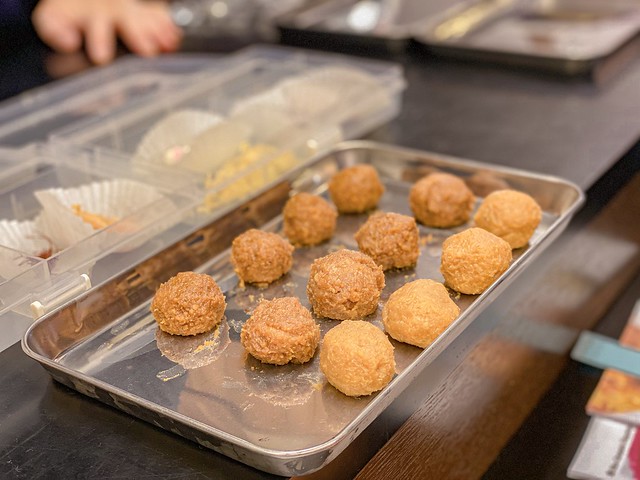
Other than bringing back a few souvenirs for friends and family ( and in fact, Yamadaya’s products are also sold at Iroha Mart at Plaza Singapura!!), you can actually engage in a hands-on miso-ball making experience for only JPY1000.

So what happens is that you will be given 3 miso balls and some ingredients such as dried shrimps, dried spring onion and other interesting condiments to make your own miso ball. Drop one into a cup and pour hot dashi or water to dissolve, and you have a bowl of instant miso soup!
Since miso is fermented and lasts a long time even at room temperature, it’s totally fine to pack it with you and bring back to your home country.
You can make a reservation for this via their FB page or email.
Area: Kita-ku, Niigata City
Website: https://www.facebook.com/pg/Yamadaya.Miso.Soysauce.Niigata.Japan/about/
17. Customize adorable rice crackers at Niigata Senbei Okoku 新潟せんべい王国

How about making your own senbei with personalized drawing for a souvenir?

Here at Niigata Senbei Okoku (Rice cracker museum), not only do you get to hand-roast the senbei and eat it fresh (trust me, it taste soooo much better freshly roasted!), there’s even a senbei shrine at the side of the museum. Oh Japan…

Prices range from JPY1000 for small cracker to JPY1500 for extra large cracker. I pick the one in between which was JPY1200.
So first you grill a raw cracker until it is all fluffed up, then will use a calligraphy pen to lightly design your cracker with soy sauce. And you will roast it again over the grill until it turns golden brown.

Here! My perfect yummy present for cheesiepetits back home!
Area: Kita-ku, Niigata City
Website: http://senbei-oukoku.jp/
TSUBAME-SANJO
Now we Are leaving Niigata city and move on to Tsubame-Sanjo, an area made of two cities “Tsubame” and “Sanjo”.
A little introduction about this area – rather than a touristy region, Tsubame-sanjo has a very special position in Japan being a major industrial cluster area of industrial products which inherited the ancient tradition such as cutting tools, work tools, metal tableware and others products making its name known not only in Japan but also in the world.
The region has attracted industrial makers overseas and generally people who appreciate fine craftmanship to have an inspiring journey through Tsubamesanjo’s shokunin’s work.
TSUBAME
17. Admire the amazing craftmanship of Tojiro’s artisan 藤次郎

Honestly, I love how Japan is evolving. Most of the time the phrase “made in Japan” gives a sense of security, but rarely do we get to know the backstory, or the actual story of how a product is actually made, in Japan.
Here comes “Open Factory” – Tojiro.

I was beyond impressed throughout the factory tour. There’s zero “factory feel” to the gallery of Tojiro. It was more like an art gallery – I mean, check out the knife cut-out frame!
Its stylishness reminded me of Nousaku, a metalwork gallery+factory in Toyama prefecture.

Origami knife series. The kitchen knife series with stainless steel handles is inspired by western cutleries, and a walkthrough with Tojiro’s manager allowed me to further understand the deep passion and pride each shokunin (craftsman) has for their prized products.
Merging tradition with cutting-edge technology (sorry for the pun), Tojiro pursues the cutting sharpness of a Japanese sword (you don’t get a second chance of slicing your enemy).

A shokunin carefully polishing a knife, he does it, and does it all over again. There’s a total of 5 tedious processes of sharpening, which is why Japanese knives cut the best.
Trivia – did you know that the sharpness of a knife affects the taste of food? Why do you think top sushi chef’s knife cost thousands of dollars? When the edge of a knife is not smooth, it leaves a rough surface on the sashimi slice, causing bacteria to easily stay and breed, which results in reduced freshness, and at the same time the bluntness of the knife also cause uneven texture that causes the sashimi to be less palatable. So yea, there is a lot more to sushi than we thought!
I have so so much respect for the shokunin being able to fully concentrate in really making the best of the world, living truly up to “made in Japan”quality.

While the latest technology allows Tojiro to produce as much as 3000-4000 kitchen knives per day using laser stamping technique (like the cut-out frame you have seen earlier), the true good knives are made by traditional forging technique (like the ones I have covered in Seki, Gifu prefecture). The wavy pattern you see on these knives is proof that the blade is been forged over and over and over again with hammering and folding layers after layers.
And with this technique, a good numbers of shokunin is needed and they can only produce as much as 10 knives per day. Which is why good knives also come at a steep price. But it will last you forever.

The steel-carving shokunin gave me a present – the kanji “Junya” engraved in a pendant.

Here you can purchase also the knife that you are going to love for a long time for your kitchen life. I bought mine, a medium-quality one at only JPY6000. There are knives selling as low as JPY3000 to over tens of thousands. Trust me, even the entry-level knives are better than any of the non-Japanese knife I’ve ever used in my whole life. All worth it.
Area: Tsubame
Website: https://www.tojiro-japan.com/series/tojiro_tsubame/
18. Tsubame Industrial Materials Museum 燕市産業史料館
To be honest, the name of the attraction doesn’t sound all too exciting. I mean, what can you expect from an industrial museum? A couple of rusty hammers?
But I couldn’t be more wrong. It is actually my favorite place in Tsubame! You will soon find out why.
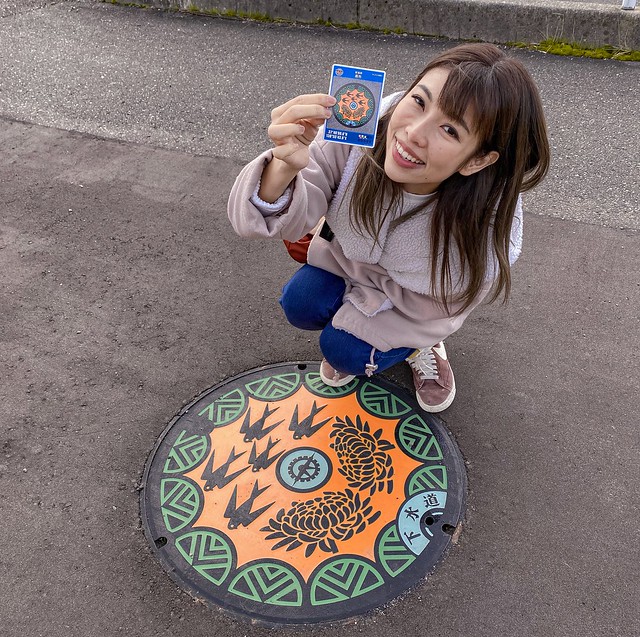
For starter, you will get to collect one of these super cute manhole card collectibles. Japanese have this fascinating obsession with decorating their “longkang cover” beautifully, and this is the Tsubame version!
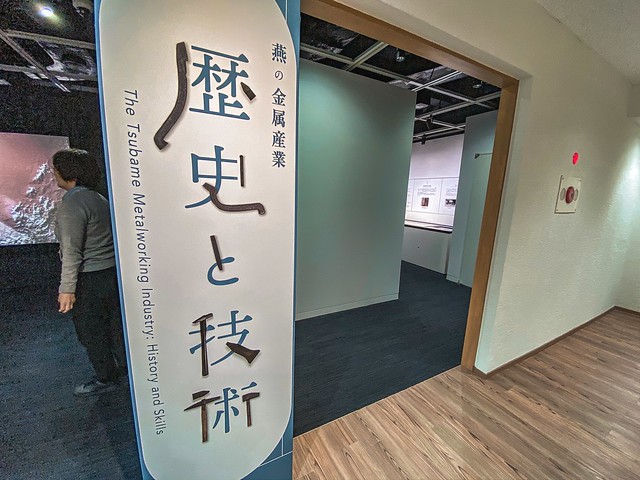
If you are interested, you may have a walk-through the history of Tsubame city and the stories behind its metalwork industry. It all began with “wakugi”, Japanese nails invented 400 years ago.
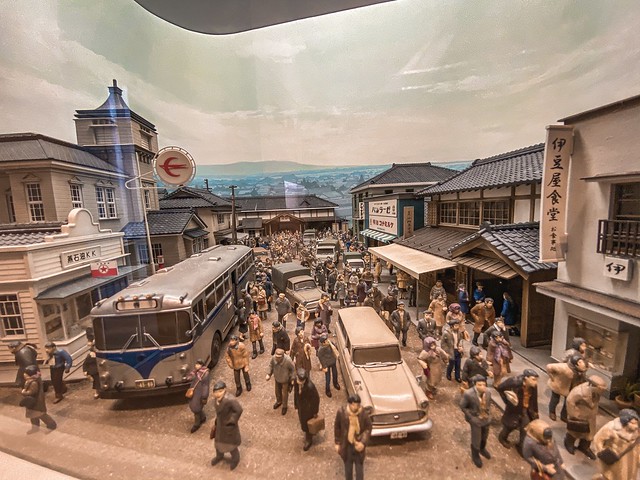
The heyday of industrial boom in Tsubame city.

There’s a hall dedicated to just “kiseru”, Japanese smoking pipes as old as Edo period. I often see kiseru being portrayed only in period dramas or Oiran performances, it was really interesting to see one in real life.
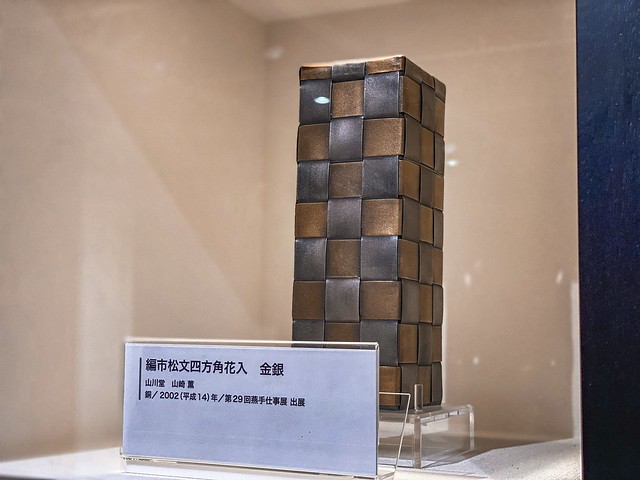
Don’t miss out the stunning copperware exhibition in the main hall. This craft for example, looks like a soft wooven box but it is entirely made of copper!
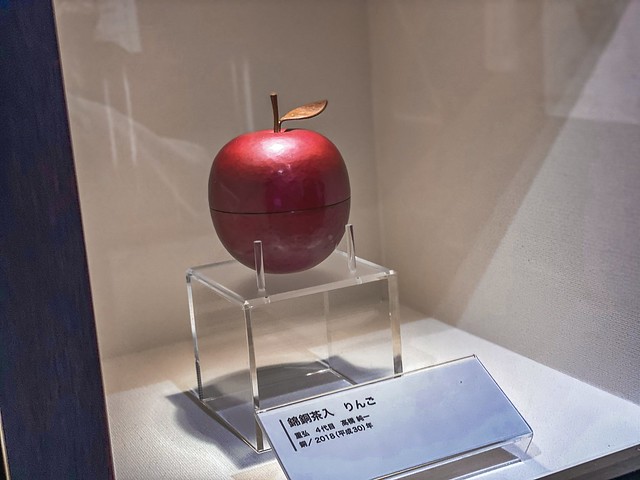
So is this apple, which serves as a tea leaf container.
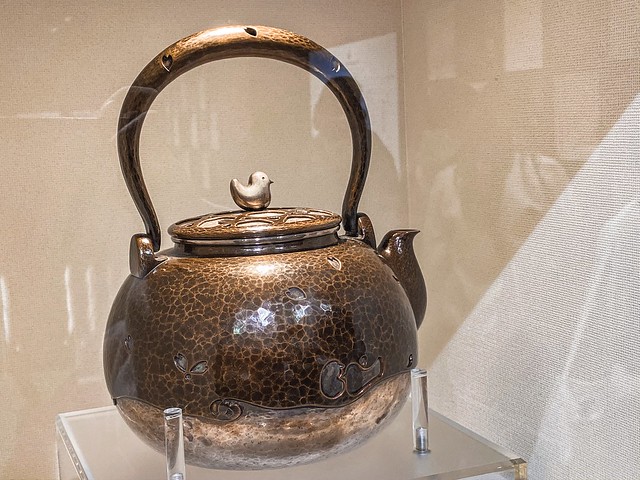
This is a famous craft work called Tsuiki copperware, a decorative technique which has been around since 1800s.

Other than traditional craftmanship, let’s look at the cutting edge skills of the metalwork industry in Tsubame! This is a piece of metal that seems to have a completely smooth, seamless surface but when you turn the knob attached to the back, here’s what happens:

A title of Japan’s latest hit drama series appears! This is made of an advanced technology which only Tsubame’s excellent molding technology could achieve.
Apparently the wordings and the metal plate are two separate pieces, fit together by only a 1/3000mm gap (I don’t even know what that number means!!!). Just… mind blown.

There’s also a workshop hall with lots of things you could experience. I think kids around primary school age would adore this place.
Get a feel of what the shokunin does daily!
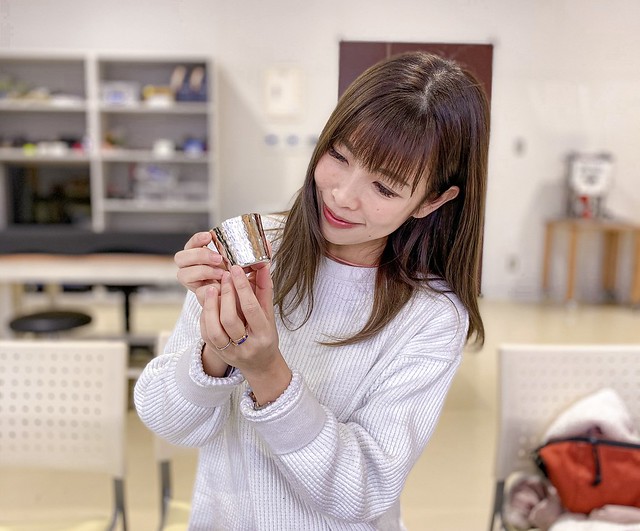
Here you get to experience Tsuchime Hammering – to hammer patterns onto your copper sake or beer cup, there’s also easy spoon-making, titanium coloring for spoon (really amazing, this would be a hit with science-loving school kids) and more.
Experiences start from as low as JPY400.
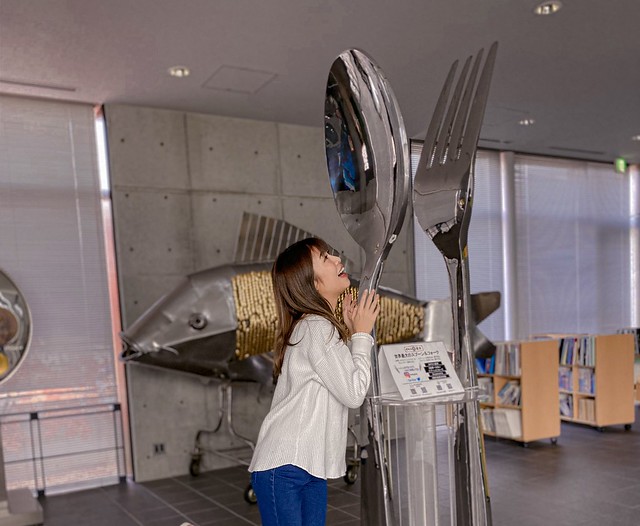
Find also lots of art displays, such as this pair of cutlery that has gone into the Guinness Records as the largest spoon and fork in the world.

My favorite part was the spoon museum (say what?).
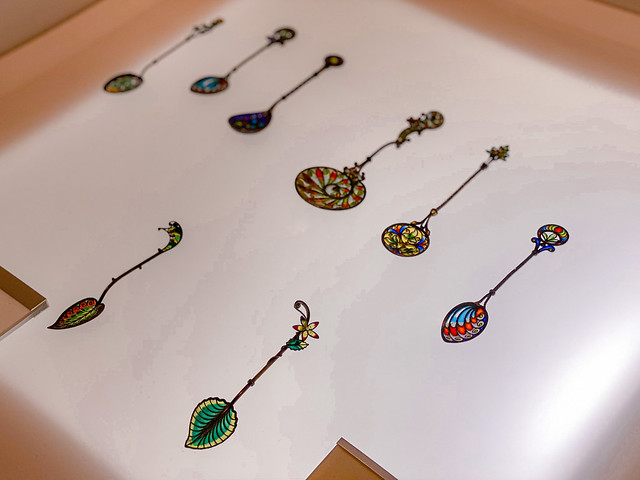
Aren’t these spoon beauuuuutiful? They belong to this doctor who has an obsession of collecting spoons from all over the world. You can find all sorts of utensils from unique to ethnic to simply bizzare, there was even wooden ice cream spoons on display and a spoon with an ornamental fly on it (?!?) I had to look thrice to make sure it wasn’t a dead fly stuck on it.
Watch my experience in the museum!
19. Eat Kamameshi at Shogetsu 釜めし松月

Thinking for a dinner venue that could fit a large group with super affordable menu?

Shogetsu at Tsubame city has you covered.

The menus starts from only JPY900 for one whole kamameshi (rice in iron pot) and mind you, my kamemeshi is oyster kamameshi!! Can you just look at the amount of oysters? I counted at least 6 and it is only JPY900!
I ordered the mushroom soup that goes with the set meal at an additional JPY500. Really good food.
Area: Tsubame
SANJO
20. Tsubamesanjo Regional Products Store 燕三条地場産業センター物産館

It’s a tourism facility recognised as an official JNTO Tourist Information Center where you can find local specialty especially a wide range of Tsubamesanjo-made metal products.

There are also mini experience such as spoon polishing for only JPY300!

Beautiful copperware.
You can enjoy tax-free shopping here
Check out their English website for more info!
Area: Sanjo city
Website: https://www.tsjiba.or.jp/kankou/english/index.html
21. Stylish Italian Lunch at Bit

Stylish, jovial, lively, that’s the mood for Tsubamesanjo Italian Bit.
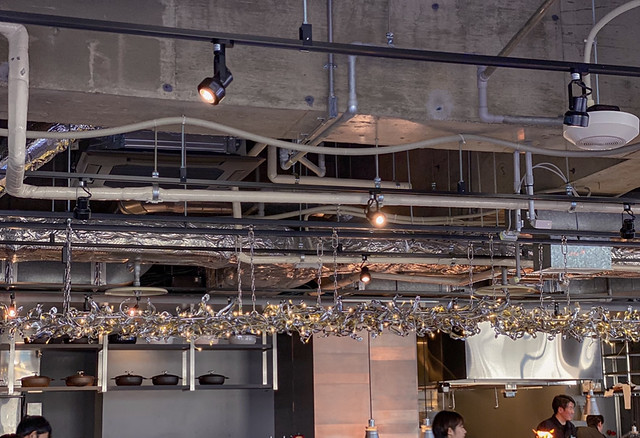
Young shop staff are fashionably groomed greeting customers with smiley friendliness, and the interior has an industrial chic with it, with one of the chandelier pieces made entirely out of recycled Suwada nail clippers (?!).
With its menu mostly using Tsubame-Sanjo’s local ingredients, made-in-Tsubame tableware and even a projection-mapping themed private room, Bit hopes to share the stylish appeal of Tsubamesanjo to the world, and successfully so.

A set meal will easily cost you from JPY1480 to over JPY2000 with lots of luxurious names on the menu to choose from. The meal comes with a salad made of freshly picked greens in the morning, a main dish and a dessert. This is the crab meat risotto. I didn’t order this but I totally drooled.

Watari crab tomato based pasta with sea urchin on top.
Area: The original shop is located right at the first floor of the above building. There’s also a branch in Niigata City and even in Ginza, Tokyo!
Website: https://tsitalian-bit.com/main/
22. Eat Curry Ramen at Masahiro
When visiting Niigata, you need to know that there are the “5 BIG Ramen” of Niigata, namely:
1.Niigata Light Soy Sauce Ramen
2.Niigata Rich Miso Ramen
3.Tsubame Seabura Ramen
4. Nagaoka Giner Soy Sauce Ramen
and we are going for the last one today
5. Sanjo Curry Ramen

This is Masahiro, a local “canteen-style” restaurant serving Sanjo’s famous specialty.

I have tried curry udon and even curry soba before, but here’s a first – curry ramen!
Area: Sanjo
Website: http://www.made-in-tsubame.jp/ra-men/cms/shop/detail/sanjo/32
23. Enjoy Gardening at Teien No Sato Honai 庭園の郷保内

Do you know “Michi no eki”? It literally means “road station” in Japanese, basically a rest area usually found along the roadsides usually selling souvenirs and local produce.
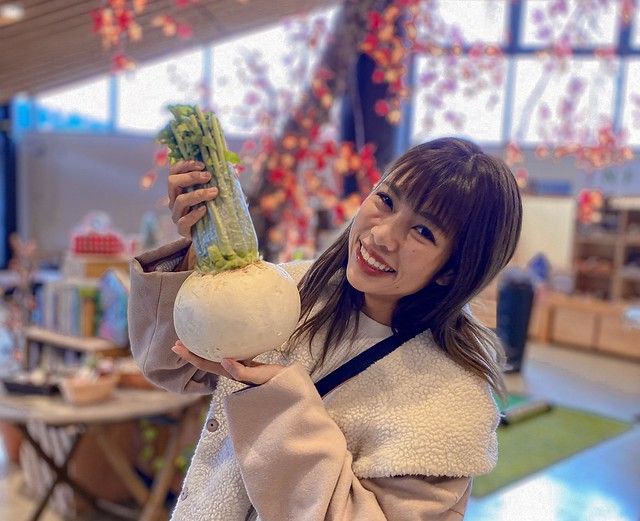
Here you can find all sorts of fresh produce, including my #CheesieHuggingDaikon. Oh wait, that’s #CheesieHuggingTurnip.
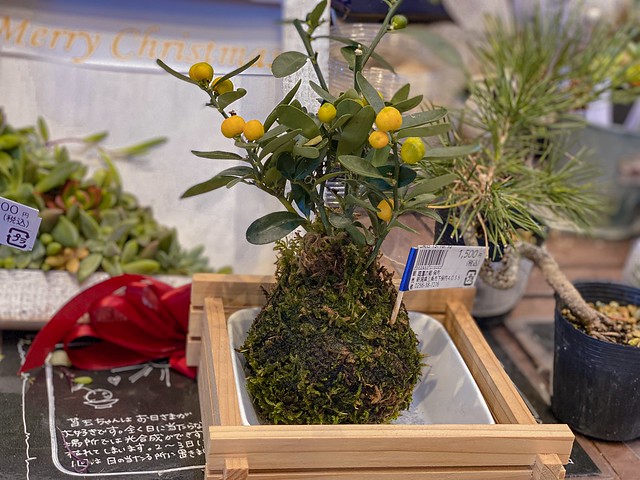
I have been to many michi no eki but this is the first gardening-themed facility I have come across.
Check out the trending “moss ball” bonsai! Apparently it’s a big hit with avid gardening enthusiasts at the moment. There are workshops conducted on this moss ball making.
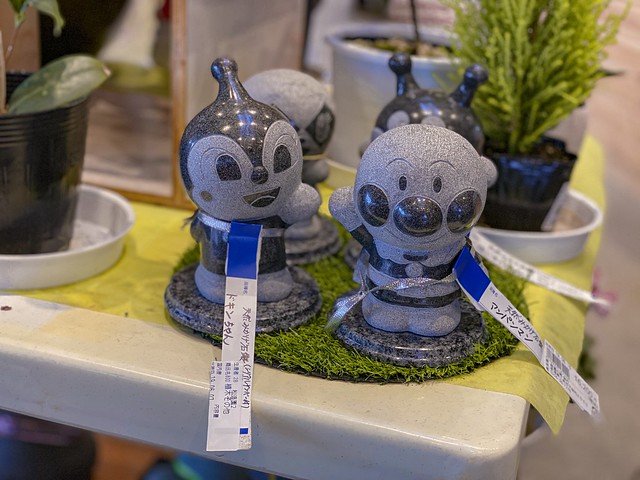
Mini stone anpanman and friends.

Other than its indoor markets and plants, there’s also a huuuuge outdoor garden with a wide selections of bonsai and plants, and everything on display is for sale. This is a miniature pine growing out of a rock, it feels to me like life hanging tightly over the cliff, maybe a good reminder when you are having a bad day at home.

Beautiful ornamental kale.

Did I mention that there’s even a Japanese zen garden??

Area: Sanjo city
Website: https://honai-gardens.com/
YAHIKO VILLAGE
24. Yahiko Shrine

Yahiko is a small village in Niigata that houses one of the best power spots of the prefecture – Yahiko shrine.

I have been to countless of shrines, but this has to be one of my favorite. It totally took my breath away upon stepping into the shrine.
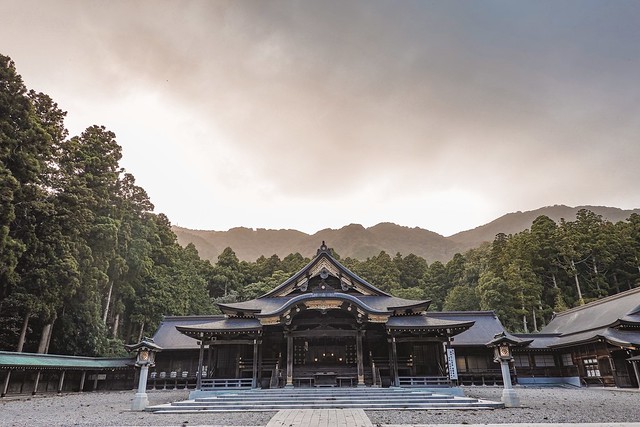
The main shrine in its splendid resplendence surrounded by pristine forests.
Apart from the spiritual stories (the deity enshrined is the great grandchild of the goddess of the sun – Amaterasu), you would want to know that the shrine is surrounded with cherry blossoms so imagine how beautiful it looks in spring time.

There’s even a garden with deers who are believed to be descendants from ancient god times. On a rock a poem goes “At the foot of the divine mountain of Yahiko, today as it has been for long, the godly deers hide. They wear a fur kimono while majestically revealing their antlers”.
If making your way to a remote village just for a shrine does not convince enough, note that Yahiko is also an onsen village so you can find lots of ryokan with authentic springs for a therapeutic getaway. I stayed at “Shikinoyado Minoya” (四季の宿みのや), which room are priced around JPY15000 with two meals provided and is just right beside the entrance of Yahiko Shrine.
If you visit in autumn time, remember to take the ropeway (JPY1500 return trip) up to Mt Yahiko for a scenic autumn leaf viewing.
Area: Yahiko Village
Yahiko Shrine Website: http://www.yahiko-jinjya.or.jp/
Minoya Website: https://www.minoya.net/
This is the end of this blog post. But Niigata doesn’t stop here. I actually made two separate trips to Sado Island (佐渡島), the largest isolated island in Japan belong to Niigata prefecture, surrounded by the sea of Japan.
It will go into a separate blog post so till then. 🙂


